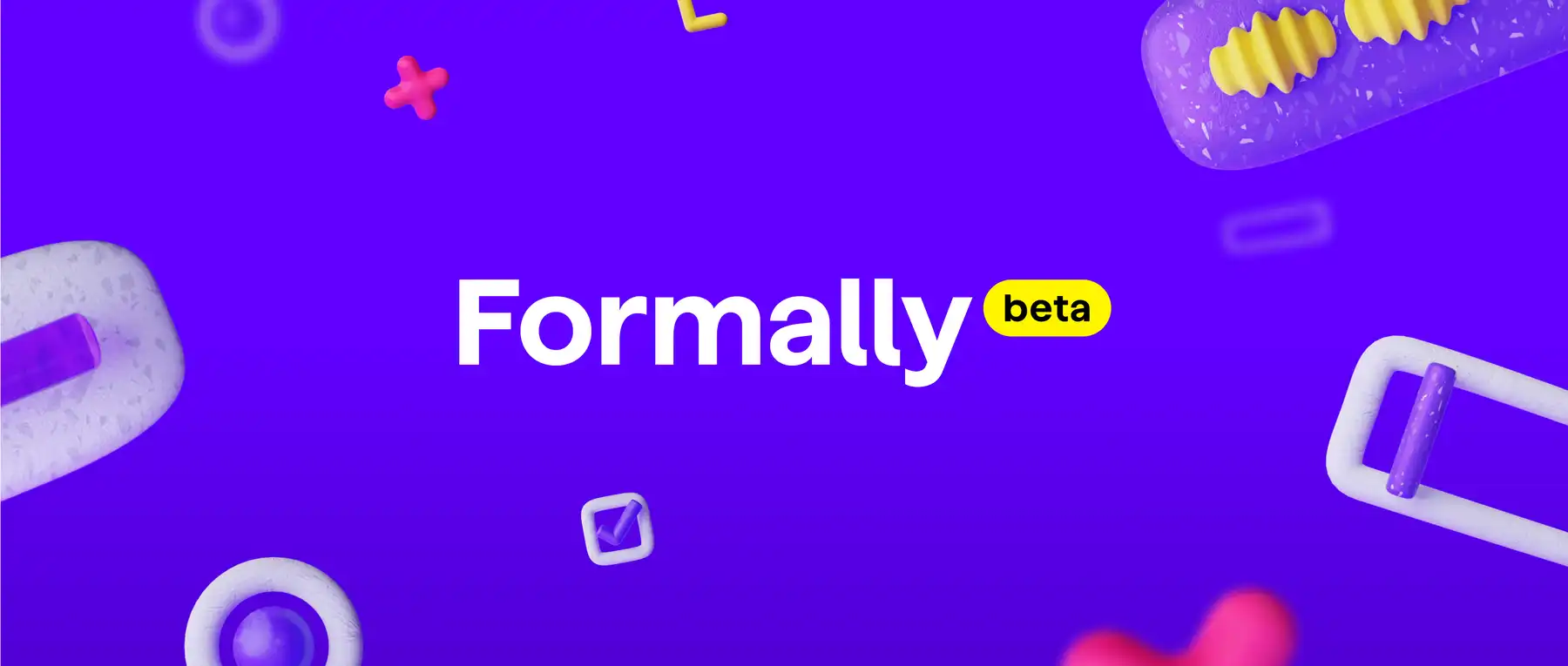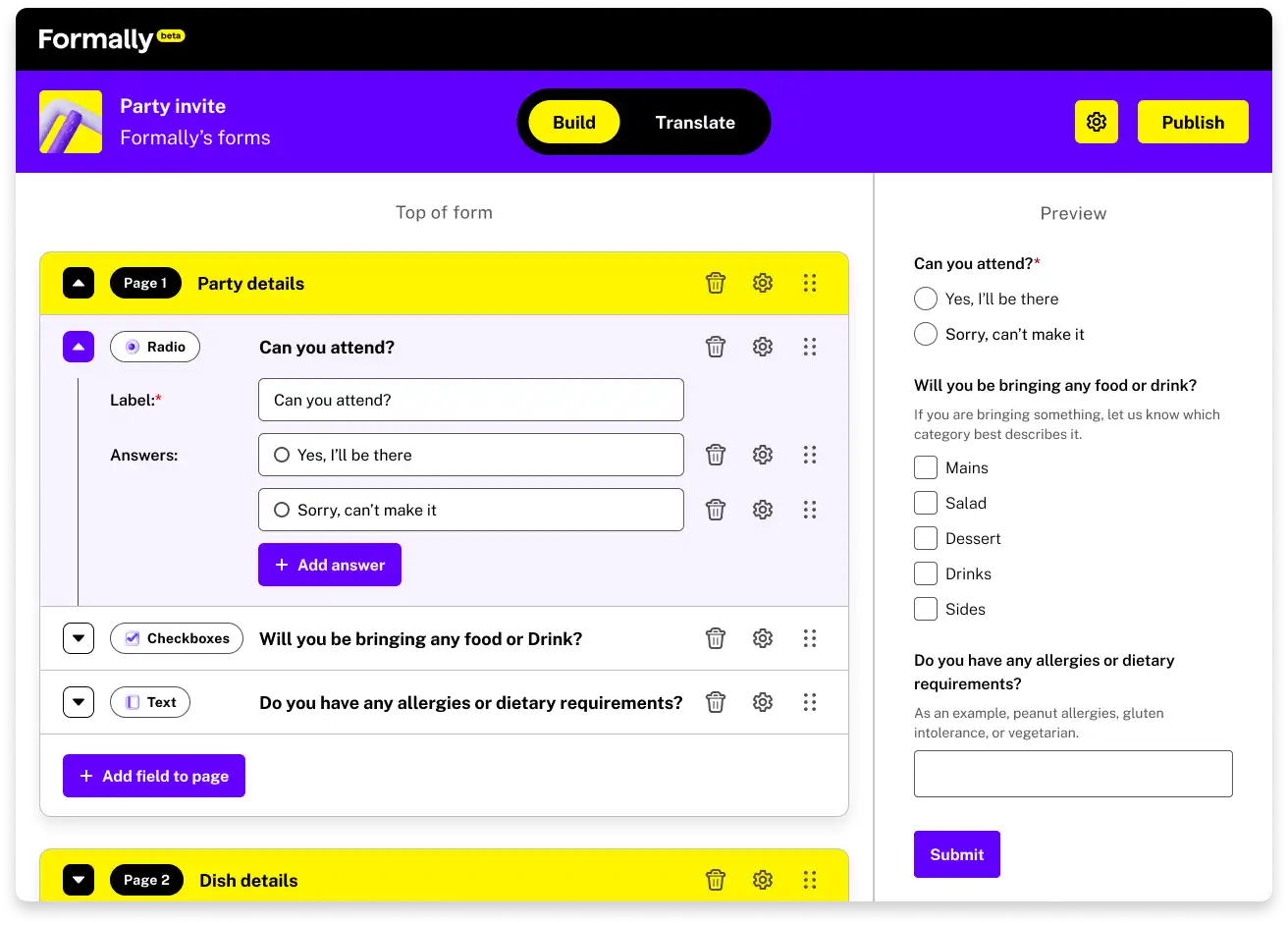
Forms are everywhere online. You’ve probably used at least one today already. Whether it was logging into your social media, ordering food, booking your vaccine slot, or filling out a survey. It’s this widespread use that makes forms so potentially empowering. But while some forms enable people to achieve tasks, other forms fail people by being hard to read, use, or understand.
In this blog we’ll talk about how forms fail people, why it matters, and what our internal impact team Springlabs is doing to fix this.
How forms fail people
Have you ever tried to submit a form and failed? You do not know why. And there’s no hint or error message to help you fix it. It might be a date or a password you’re trying to input. Without the guidance of the right format or characters to use, you get frustrated, give up on the task, and leave the site.
At best, inaccessible forms can be frustrating and time consuming to fill in. At worst, they can be impossible to complete, leaving people feeling ignored and unvalued, and businesses missing out on new audiences.
Forms fail people when they:
- rely on colour coded error messages or low colour contrast
- lack descriptive labels, error summaries, hints, and grouped field sets
- require a mouse to navigate.
Why accessible forms matter
From 2019, all government organisations are legally required to meet the NZ Government Web Accessibility Standard 1.1. It means their web pages must follow Web Content Accessibility Guidelines (WCAG) 2.1 AA. This includes forms.
But accessible forms matter everywhere, not just as a legal requirement for a select few. Forms are more than a digital tool. They connect people to services, to their communities, and to tasks and information needed in daily life. This is why forms need to work for everyone, such as those living with disabilities, from different cultures, and vulnerable communities.
Accessible forms should be the standard, because they are better for everyone:
- Labels, hints, fieldset grouping, and error summaries inform screen readers. They also help everyone understand how to fill out a form. The date and password example we mentioned earlier could easily be avoided with clear hints and error summaries.
- High contrast colours make text easier to read for everyone, not only for people with limited vision or colour vision deficiency.
Introducing Formally
At Springload we often build accessible bespoke apps for our clients, but every time a project needed a smaller and cheaper solution, we failed to find a form builder that was fully accessible.
Our internal impact team Springlabs developed Formally to give everyone the tools to create accessible forms, without the price tag of a bespoke app.
The name ‘Formally’ comes from a combination of ‘form’, the product itself, and ‘a11y’, which is an abbreviation of accessibility (‘a’ followed by 11 characters and then ‘y’). We changed this to ‘ally’, which is screen reader friendly and literally spells out our commitment to being allies for digital inclusion and accessibility.

What makes Formally accessible?
Formally features put accessibility first and meet the highest Web Content Accessibility Guidelines (WCAG 2.1 AAA).
Formally is accessible because it:
- is screen reader friendly
- uses labels, hints, fieldset grouping, and error summaries
- has high contrast colours
- can be navigated using only a keyboard.
Get free early access to Formally
We are looking for people to use an early release of Formally and give us feedback on our form builder and features.
Visit getformally.com to find out more about Formally, test demo forms, and register for early access.
Get in touch
Let’s make the things that matter, better.
Email: hello@springload.co.nz
Phone: +64 4 801 8205